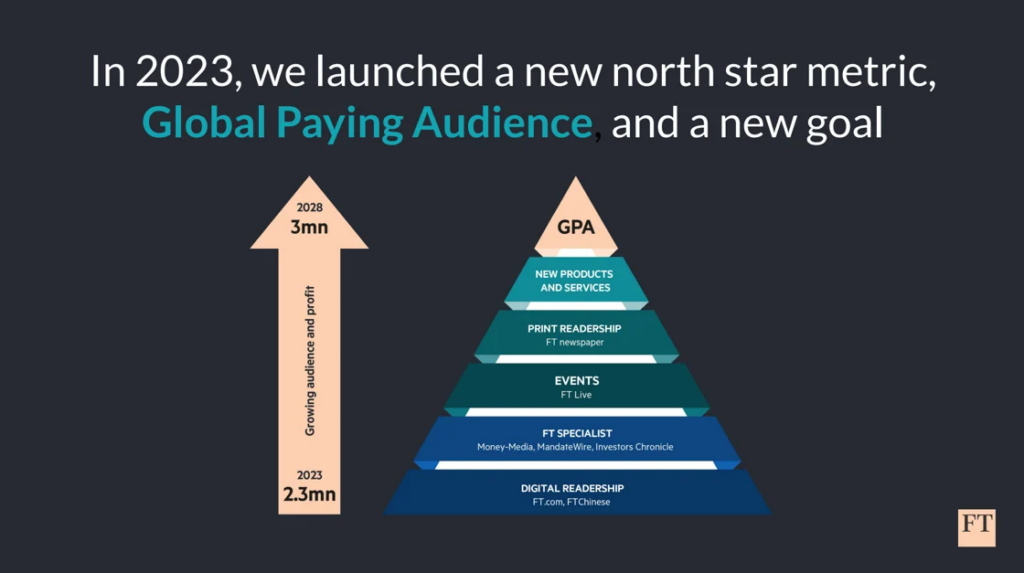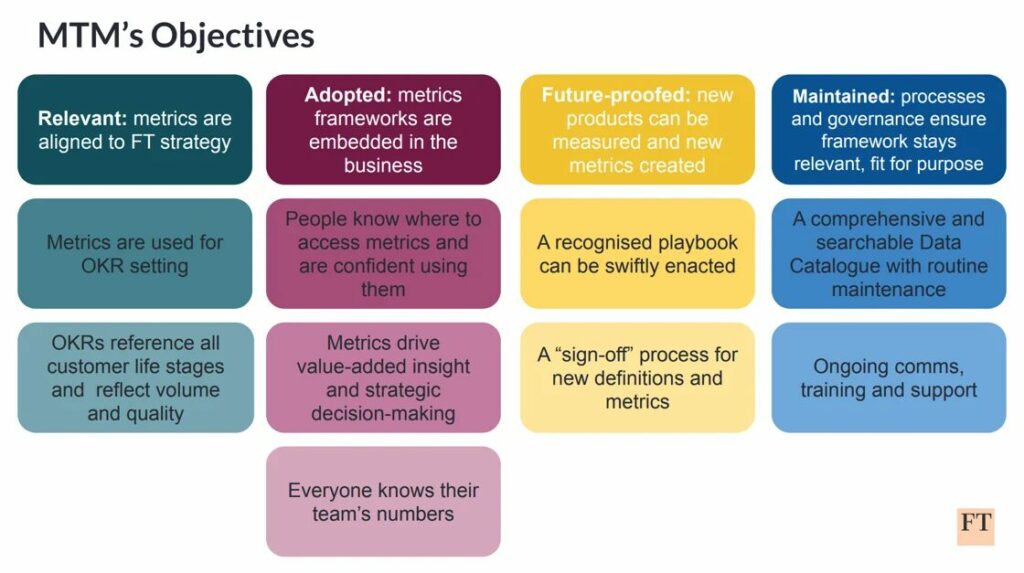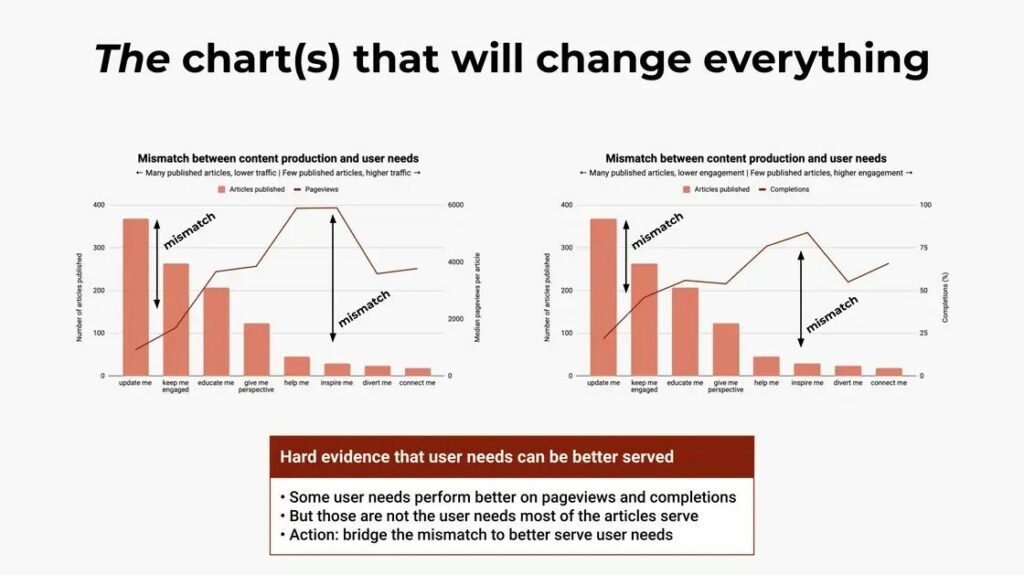

You're reading The Audiencers' newsletter #58 sent out on March 5th, 2025. To receive future newsletters straight to your inbox every two weeks, sign up here.
Save the date, The Audiencers’ Festival is back in London this June 24th for it’s 3rd edition!
And at this location… 😍😍

Full agenda (which I am SO excited about) and ticket release coming soon.
In today’s newsletter:
- FT’s North Star metric, and the Metrics that Matter framework
- Inspiration: how to target readers who didn’t finish subscribing
- Has your publication got a mismatch between content production and serving the needs of users? The 6-week user needs course that will help
- The product resource list: what should you be reading to improve your product work?
The North Star Metric at Financial Times
From 2023, Financial Times’ North Star was developed from Lifetime Value to Global Paying Audience (GPA), designed to help grow audience revenue beyond its core journalism offerings and across its broader portfolio of products and services, aiming for 3 million by 2028.

The challenge, however:
> Not all departments are represented in Global Paying Audience
> The North Star can feel removed from day-to-day activities
> No one metric can do everything for everyone
The solution: Metrics that Matter
A framework outlining a range of metrics that sit underneath GPA and can be used more regularly by different teams across the organization.

In short, Metrics That Matter (MTM) gives all departments at FT a shared framework & common language so everybody in the company can see how their day-to-day work impacts GPA.
> Reduces focus & pressure on the North Star
> Mirrors a simplified customer lifecycle
> Put more focus on retention
> Encourages evaluation of costs
> Links volume and value in all pursuits
> Uses existing metrics where possible

Target readers who didn’t finish subscribing
Did someone visit your subscriptions offer page but not continue to payment? Target them with a pop-up to bring them back to where they left off.
Like Texas Monthly who displays this module after leaving the subscription landing page.

But, you can do better!
Tell a reader why they should continue subscribing.
Journal du Dimanche uses Poool to target these readers with a personalized paywall highlighting the ease of subscribing (“Finish subscribing in a single click“), benefit of converting (“access all articles“), the low entry point (“€1 first month“) and reassuring (“Cancel anytime“).

Has your publication got a mismatch between content production and serving the needs of users?
Khalil A. Cassimally‘s brilliant user needs email course highlights the importance of comparing content production and serving each user need
In the example below, the help me, inspire me, divert me and connect me needs appear to be more prevalent in users since these needs perform better across page-views and completions.

You can also see that content production over-indexes on the update me, keep me engaged, educate me and give me perspective needs – the needs that are less prevalent in users.
Specifically at The Conversation UK, the team defined 4 user needs required to be valuable to their audience:
- Motivate me: advice, guides
- Educate me: explainers
- Keep me on trend: quickly getting in the know
- Give me perspective: analysis to broaden horizons

Running user research on this model, “Motivate me” surfaced as the greatest need, whilst “Give me a perspective” had a less great need, which matched users’ on-site behaviors.
For example, in the run up to a major climate summit, their climate editors published more “motivate me” type content, such as guides and solutions journalism, and a new climate action newsletter to further serve this need, with one climate issue every week, covered with a solutions lens. As expected, interest in these stories was very high.
How can you achieve the same? Sign up to Khalil’s 6-week user needs course on The Audiencers – it’s free and has already been a game-changer for many publishers looking to implement this model.
Product resource list
I asked LinkedIn what I should be reading to learn more about product teams and work in media organizations. Here’s the great list of suggestions you came back with:
- News Product Alliance (NPA)
- Reforge
- Lenny’s newsletter & Podcast
- The Pragmatic Engineer newsletter
- The User Research Strategist
- Simon Owen’s newsletter
- Thomas Baekdal
- Project Management Institute
- FT Product & Technology blog on Medium
- The Clever PM
See you in two weeks for the next newsletter,
Madeleine


